.
Full steam ahead as Swiss financier jumps on board
.
The Harro market railway project secured a loan facility in the past week for USD 1.4 billion from Credit Suisse, a Switzerland-based financial group.
The line stretches from Awash to Weldia, both in the Amhara Regional State, and is part of the national railway project that extends from Mekele, the capital of the Tigray Regional State, to Djibouti, via Semera, in the Afar Regional State.
The loan agreement will be signed on Wednesday (29) by officials from Credit Suisse and the Ministry of Finance and Economic Development (MoFED), sources told The Reporter.
Nine delegates from Credit Suisse recently met with professionals from the ministry to discuss the possibility of accessing a loan, with the two sides also deliberating on interest rates and the best way to service the deal.
According to sources the board of directors at Credit Suisse has already approved the loan facility ahead of the signing ceremony this week.
The loan will be used for the line that stretches through Awash to Weldia (Harro Market), part of the larger railway project that runs from Mekele via Weldia and Semera, to Port Tajura in Djibouti. Turkish company Yapi Merkezi secured the contract for the construction of the 389kms Awash to Weldia section, estimated to have cost USD 1.7 billion. Credit Suisse will provide USD 1.4 billion, with sources indicating the Ethiopian government will cover the difference of USD 300 million.
This is the first time that Credit Suisse has financed a project in Ethiopia, but sources revealed the Swiss multinational will actively participate in funding American and European corporations if they commit to undertake large developments in Ethiopia.
It was reported that the China Communication and Construction Corporation (CCCC) has secured construction for the Mekele to Weldia part of the rail line.
This project, estimated to cost some USD 1.5 billion, is financed by the Chinese EXIM bank and covers some 260kms.
The section that stretches from Mekele to Port Tajura, Djibouti, covers a total distance of 675kms, and is expected to link the northern part of the country to the central, in addition to neighboring markets such as South Sudan.
.
GE plans to establish an assembly plant in Ethiopia
.
The US-based manufacturing giant, General Electric (GE), is planning to establish a medical equipment assembly plant in Ethiopia.
Reliable sources told The Reporter that the US multinational company is planning to assemble various medical equipment and machines in Ethiopia and distribute them to African markets. “They are contemplating to build a light assembly plant in Addis Ababa and export them to different African countries. They want to use the extensive cargo flight network of Ethiopian Airlines,” sources told The Reporter.
The amount of the investment and specific list of items the company wants to assemble here are not yet known.
GE’s chairman and CEO, Jeffrey Immelt, is scheduled to visit Addis Ababa next week. During his one-day visit Immelt is expected to sign an investment agreement with the Ethiopian government for the assembly plant. The CEO will meet Ethiopian Prime Minister Hailemariam Desalegn, Debretsion Gebremichael (Ph.D.), Deputy Prime Minister and Minister of Information Technology and Communications, Tedros Adhanom (Ph.D.), minister of foreign affairs and other senior government officials.
In addition to the medical equipment assembly plant project, GE’s chief will discuss the possibility that the company could engage in power and transport infrastructure development projects.
Sources said GE is known for human resource development. “There are a number of CEOs working in different successful multinational companies who once were trained and employed by GE,” sources said. Senior vice president for human resources, Susan P. Peters, will accompany the CEO to Addis Ababa. Susan Peters, will give a two-hour lecture at the Addis Ababa University, Faculty of Business and Economics. Susan Peters leads GE’s human resource department responsible for 300,000 employees worldwide.
Jeffrey Immelt, as part of his Africa tour, will visit Ethiopia, Kenya, Mozambique and Nigeria. The CEO will start his visit in Addis Ababa where he will stay only one night.
Executives of GE have been negotiating with the Ethiopian Electric Power Corporation (EEPCo) to secure a contract on the electro-mechanical work on the Grand Ethiopian Renaissance Dam (GERD) project. GE also has a keen interest to engage in the railway development project in Ethiopia. Particularly, the company focuses on the electrical part of the railway projects.
General Electric has a strong partnership with Ethiopian Airlines and has been supplying aircraft engines to Ethiopian. Ethiopian Boeing B787-8 Dreamliner and B777 aircraft are powered by GE engines. During his stay in Addis Ababa, Jeffrey Immelt will visit the headquarters of Ethiopian.
The company has different wings including energy, health, home and business solutions, transportation and finance and is known for manufacturing aircraft engine, home appliances, locomotives and crude oil extracting machines.
.
ETHIOPIA GOES EAST
.
With a view to extending outside of Africa, Ethiopia is ready to sign a power market agreement with the Middle Eastern country Yemen, sources disclosed to The Reporter.
According to reliable sources, both Ethiopian and Yemeni governments will sign a Memorandum of Understanding within a few days, after the conclusion of bilateral discussions.
The draft agreement proposes, according to sources, that Ethiopia will provide 100 megawatts (MW) of power per year, to be transferred through electric lines stretching to Yemen along the Red Sea.
The two nations were also said to have reached an agreement to find possible ways to secure finance to implement the plan.
The new agreement will make Yemen the fourth nation to get power from Ethiopia, alongside Kenya, Djibouti and Sudan, provided the project goes according to plan.
Neighboring Somaliland has expressed a desire to take power from Ethiopia, although discussions are ongoing and there is yet to be a final agreement.
Sudan has already secured 100 MW power from Ethiopia, despite its original desire to receive 200 MW. Meanwhile, Kenya and Djibouti are getting 100 MW and 50 MW of power respectively.
According to a report by the World Bank, the Middle Eastern nation of Yemen has the smallest electric power supply of all its neighbors in the region.
http://www.thereporterethiopia.com/index.php/news-headlines/item/1542-ethiopia-goes-east
.
Government industry zone attracts major foreign companies
.
- Chinese industry zone woes over Tax Holidays
- Several multinationals are vying to be part of the new government-developed industrial zones that are being established in Addis Ababa, and in other areas around the country.
Some 20 foreign companies are setting up in the Bole Lemi industrial zone on the outskirts of Addis Ababa, which on completion will be the first of its kind constructed by the government. The Eastern Industry Zone, developed and owned by a Chinese firm some four years ago, paved the way for the government to realize the potential in the area.
The Ministry of Industry (MoI) is the authorized public office tasked with developing industry zones in the country. The blueprint of the country’s economic development – the Growth and Transformation Plan (GTP) – set out for a handful of huge industrial zones to be constructed in the country. However, the Bole Lemi industrial zone, located to the east of Addis Ababa, is the only project to have materialized in the GTP period.
According to the MoI, around 20 foreign companies have secured factories at the site. The initial phase has seen the government develop some 156 hectares of land, out of which five companies have already started to installing machinery on a 38 hectare portion. The Taiwanese George Shoe Corporation Private Limited Company, best known as the George Gloria Group, is a large Chinese shoe manufacturer, poised to finalize installation of its factory in about two months’ time. It has leased two sheds on a site of approximately 16.6 hectares.
O.K. Kaul, general manager of the George Shoe Corporation, said that shoe production will commence in May. He added that the company has devoted some 150 million birr as an initial investment. When the factory reaches full capacity it will employ around 1,000 regular workers, with 100 percent of goods to be exported to China and the US markets.
Other companies in the industrial zone include the South Korean K.E.I, the Indian Karli International and the Pakistani A.N.F garment factories, which are all working to install machinery at Bole Lemi. According to the MoI, five firms are behind schedule with regards to pre-arranged agreements. It is rumored that George Shoe is unhappy with the quality of the sheds so far constructed, and there have been additional problems with the temporary supply of power and water.
Despite this some 5,000 local employees will be offered job opportunities when the five companies switch to full operation.
The development of the five sheds at Bole Lemi has already cost the government some 349 million birr, and the remaining 15 factories will require an additional 1.76 billion birr. For the second phase of the Bole Lemi development some 186 hectares of land is required, with the zone expected to be completed by next year.
In a related news, the Chinese owned Eastern Industry Zone (EIZ) is furious about the delay to tax holidays the government had promised to give to the company. According to Jiao Yongshun, assistant director of EIZ, it has been four years since EIZ received a tax holiday, and the Zone had agreements with MoI regarding support and taxation issues.
The problem stems from the fact the Ethiopian Revenues and Customs Authority (ERCA) considers EIZ as a developer or land leaser, and not as a manufacturer. EIZ has alleged that it was promised tax holiday favors before it established its operation. The Ethiopian Investment Board has told EIZ that it is currently not entitled to enjoy tax holidays unless some rules are amended.
The issue of land is also creating a headache for EIZ, as it continues negotiations with the Oromia Regional State Government, which had promised the Chinese company an additional 260 hectares to develop. EIZ claim to have initially been assured 500 hectares of land. Currently 233 hectares has already been leased by some 20 companies, and EIZ has been praised for creating 50,000 jobs.
Expatriating profits in foreign currencies, Yongshun added, is the other challenge facing Chinese companies. Investment law clearly states they can expatriate profits in foreign currency, but they are required to wait until the government extends the amount of money in foreign currency that they want take out.
One of the companies stationed in EIZ is Huajian, the renowned Chinese shoemaker. Nara Zhou, representative of Huajian, told The Reporter that the company has customers like Mark Fisher and the Toms brands. Yet Nara said the company is frustrated by the lack of quality production and the low efficiency level of the workers here. She said that customers are complaining about the poor quality. Huajian produces 7,000 pair of shoes a day and generates some USD 1.3 million per month, employing some 3,500 workers.
Meanwhile, the MoI plans to erect industrial zones in the eastern and northern parts of the country, namely Dire Dawa and Kombolcha. In Addis, aside to the second phase of the Bole Lemi zone, Kilinto is the other huge industrial project to come into play. However, all plans are on hold as feasibility studies are carried out and external finances awaited. The World Bank is believed to be working to leverage the funds the government desperately requires.
.
UK retail giant wary of poor working conditions
.
The British merchandising retailer Tesco has met with ministers, officials of the International Labor Organization (ILO) and local trade union representatives to raise concerns on working conditions across the country.
Tesco held the workshop on Thursday, entitled: “Building an ethical and sustainable clothing industry in Ethiopia”. The concerns come after setting up a small office here last year to outsource clothing (textile and leather) products. Currently, Tesco has sourced some 20,000 pieces of Ma’a garments from the F & F Company. Another 80,000 pieces will follow in the near future, according to Lumat Ahmed, commercial manager for sourcing in Africa.
Lumat said that Tesco wants to go “slowly but surely”, indicating the fierce criticism the company has faced in the UK, where it has its headquarters. Giles Bolton, Tesco ethical trading director, is mindful of the controversial practice of outsourcing materials. Many western countries depend on Bangladesh for fine fabrics and garments, and fresh in the memory is the collapse of a factory there, killing many and leaving hundreds injured. On the back of this tragedy, Tesco and other retail companies were targeted for their role regarding working conditions and exploitation. Tesco is greatly involved in Bangladesh, dealing with some 250 million euros worth of exports and sourcing production of around 40 million units.
Tesco and its contemporaries are labeled for not caring about safe and good working conditions in third world countries, to which Bangladesh is the best example.
Poor working environments and disasters are not the only issues that concern the media and pressure groups, with Tesco also cited in the recent European horsemeat scandal. Child labor and low pay are also leveled against companies involved in the developing world, yet Bolton thinks much of the criticism is unfair.
In line with these incidents Tesco has made it clear to both company officials and the public that it does not want to be in the headlines for the wrong reasons again. That said, Bolton and Lumart assured Tadesse Haile, Minister of State for the Ministry of Industry (MoI), that Tesco is well aware of Ethiopia’s potential to become the next frontier for the clothing industry. Yet they confirmed that they want to move slowly, predicting that by 2014/15 Tesco will export some two to three million euros of products. This is set to increase to 15 million euros by 2016/17.
This cautious approach does not appear to concern the MoI, with Taddese pointing out that having international companies like Tesco is in itself encouraging for the 60 garment factories, 15 textile mills, 28 leather tanneries and 18 shoe factories operating in the country. According to Tadesse, the MoI expects some 60 large investors to start production in 2015/16, and the minister went on to tell Tesco officials that Ethiopia targets a USD one billion yield from textiles, and USD 0.5 billion from leather products, in that same year.
.
Investment flow to Africa hampered by negative perception, says Dangote in Davos
.
Negative perceptions, often arising from unfounded reports of social and political situations in African countries are blocking foreign direct investments into the region, Aliko Dangote, president of the Dangote Group has said.
The implications, he indicated, were a cramping of these economies and the job opportunities envisaged.
Speaking at the ongoing World Economic Forum in Davos Switzerland yesterday, Dangote said governments of African countries needed to make deliberate efforts to correct these distortions, in order to widen the channels of investment flow.
Speaking during a live telecast of a business platform “Africa’s Next Billion”, alongside other leaders, including Nigeria’s President Goodluck Jonathan and Ghana’s John Mahama, Dangote said the wrong perception of the security and political situation in Africa had made investors, especially from the West, to lose sight of the potentials in the continent, and African countries had also done little or nothing to remedy the ugly situation.
Explaining that the situation in Africa was not as bad as was being painted, the businessman said corporate investors did not check what Africa was truly about, but based their judgments on what they read in newspapers, which was often incorrect.
“For instance, foreign investors wait for elections to be concluded. After then, they try to check the stability of the government of the day, for at least two years, but by then, its more difficult to take any decision because the tenure of the government is coming to an end. By so doing, foreign investors are scared of incoming or incumbent governments and the cycle keeps going on,” Dangote said.
“But then, I don’t think there is anything to be afraid of because no government is against business, every government is pro-business. Most business risks are perceived, not actual risks,” he stated.
He lamented that Africa was not good at telling its own stories, which meant that people often relied on stories they heard from others, to make their decisions, and most times those stories were not true. “People always underestimate Africa,” he said.
He added: “As at today, an American has more access to Africa than myself, taking visa issues into consideration. I would require 38 visas to visit 38 African countries outside of ECOWAS.
“The government needs to make a policy where we don’t supply/export raw materials alone; we want to be involved. We want those factories to be set up and produce here, run it for us for about 4-5 years, then we can take over production ourselves. Majority of our raw materials have been exported, processed abroad and brought back with at least 10 percent higher than the original cost.”
He said that entrepreneurship entails being able to take calculated risks, strong business stamina and a large appetite for work and success, adding that Africa has what it takes for people to do business and succeed.
“In Nigeria, we have one of the most attractive investment policies through framework that the government has put in place to help businesses succeed. If I dreamt five years ago that I would invest in agriculture, I would write it off as bad dream or nightmare, but today, we’re investing $2.3 billion in agriculture, $2 billion in sugar, and $300 million in rice,” he said.
“In agriculture, we’re going to create 180,000 jobs in the next four years in Nigeria. African governments need to invest in infrastructure, education, economic stability,” he added.
.
Alecto Minerals eyeing initial drilling at Wayu Boda gold project
.

The 945.5 sq km project is a joint venture with gold group Centamin, which is required to fund US$1.8 million to maintain an initial 51% interest and field work has started, Alecto said.
The exploration camp has been set up and all the ancillary support equipment for the core drill rig is on site.
Full details of the proposed programme are being finalised and will be announced in due course, it added.
So far, the company has conducted trenching, geophysics, and geological mapping which focused on the northern 15% of the licence areas where there are extensive artisanal workings.
Alecto chief executive Mark Jones said: “The commencement of field work at the prospective Wayu Boda gold project in Ethiopia symbolises the start of an exciting campaign managed by Centamin, which provides Alecto with exposure to the value upside potential present within the licence area without the expenditure.
“Drilling is anticipated to commence in the near future, and we look forward to divulging the full details of the forthcoming drilling programme in due course.”
Earlier on Thursday, the firm said it was confident of increasing the resource at its Kossanto gold prospect in Mali after receiving assays results for nine holes recently completed.
The drilling was carried out on the Gourbassi East target and Jones said the results confirmed the gold mineralisation extends to the south-west of the original resource area.
Shares dipped 10.26% to 1.75p. Register here to be notified of future Alecto Minerals articles.
.
Parliament approves loan agreements worth USD half a billion
.
The House of People’s Representatives approved loan agreements worth USD half-a-billion on Tuesday, secured from various international financiers for the implementation of vital countrywide projects.
The major project areas include road construction, education, sustainable land use management and development schemes.
The financing agreements that were signed by the Ministry of Finance and Economic Development (MoFED) and various international institutions, notably the OPEC Fund for International Development (OFID), the Bank of Arab Development and Economic for Africa (BADEA), the Saudi Development Fund (SDF), the International Development Association, and the African Development Bank (AfDB).
According to MoFED in documents presented before the House, the loans are to finance projects such as Modjo-Hawassa highway, the Arba Rakati-Gelemso Micheta road, the Second General Education Quality Improvement Project II, and the Sustainable Land Use Management Project II.
‘
Norway gives duty free privilege to Ethiopian exports
.

Mahlet Fasil
The Norwegian government says it would allow trade preferences to Ethiopian export products for unlimited period of time. At a press conference attended by representatives of the two countries, it was mentioned that paramount importance will be given to strengthening the trade and investment relations of the two countries.
In 2012, the total trade turnover between the two countries stood at only $58 million USD. Though Ethiopia’s exports to Norway have shown some progress as of late, its imports from Norway declined to $2.7 million USD in 2012 from $4.2million USD in 2004, showing a negative rate of growth by about 35%.
Gashaw Debebe, Secretary General of Ethiopian Chamber of Commerce and Sectoral Association (ECCSA),said during the event organized to brief businesses on the privilege the Norwegian government accorded to Ethiopian exports, strengthening the trade and investment relation of the two countries was important. It is an established fact that trade has proved to be one of the most effective tools to foster development, according to Gashaw. According to him, increased trade between and among developed and developing countries enhances reciprocal-export earnings; knowledge and technology transfer; diversified economic base and acceleration economic growth.
Processed Honey and coffee and flowers are some of the most famous Ethiopian products in the Norwegian markets.
http://addisstandard.com/norway-gives-duty-free-privilege-to-ethiopian-exports/
.
Norway to Co-Chair Human Rights and Democracy Sub Group in Ethiopia with the European Union
.

Through this role, Norway is actively engaged in human rights and democracy issues in Ethiopia
As of November 2013, the European Union has assumed the role as Co-Chair for the Human Rights and Democracy Sub Group in Ethiopia, after the United Nations Office of the High Commissioner for Human Rights. Norway and EU will Co-Chair the group and regularly bring together partners working on human rights and democracy issues in Ethiopia.
The Human Rights and Democracy Sub Group is a sub-group of the Ethiopian Partners’ Group, which reports to the Development Assistance Group (DAG). Norway has co-chaired the group since 2011. Through this role, Norway is actively engaged in human rights and democracy issues in Ethiopia.
The objectives of the Group are to share information on recent human rights and democracy related events, actions and plans, harmonize efforts to monitor human rights situation and follow-up human rights allegations in the country. Each meeting has a thematic focus and a relevant speaker is invited to introduce a topic. Topics which have been addressed over the last year are:
• Civil Society in Ethiopia
• Resettlement and Villagization
• Federalism, Decentralization and Local Authorities
• Media, Press Freedom and Journalist Culture in Ethiopia
• Ethiopia’s National Human Rights Action Plan • Ethiopia’s Structural and Political Framework focusing on the Constitution and Ethnicity
• Ethiopia’s Universal Periodic Review – 2009 and upcoming 2014 – Civil society’s report
• Religious development in Ethiopia focusing on Islam and relations to the State and the Orthodox Church.
(Embassy of Norway)
.
Busy day for House as three crucial laws passed
.
On Tuesday the House of Peoples’ Representatives endorsed three important proclamation bills, namely the World Health Organization Framework Convention on Tobacco Control (WHO FCTC), the African Union Non-Aggression and Common Defense Pact, and the Livestock Marketing law.
The House passed the new tobacco controls with a majority vote after several years of advocacy by various groups, who lobbied the government for legislation to regulate tobacco products in Ethiopia.
The proclamation prohibits smoking in public places, and includes a large rise in tax and a significant increase in the price of cigarettes. It also enforces that the packaging displays messages as to the health dangers of tobacco.
Moreover, the proclamation forbids the advertisement and promotion of tobacco products in the media.
The draft bill, which was presented to the House on Tuesday, was said to be formulated based on the international WHO FCTC, which has so far been signed by 172 countries, including Ethiopia.
The convention, first adopted in May 2003 in Geneva, has been welcomed by Members of Parliament (MPs). Last month when it was presented for the first time before the House, it was noted that there were several favorable conditions in the country to enable the implementation of the legislation.
Apart from enabling the legal framework to protect citizens from the health hazards and pollution relating to tobacco, ratifying the convention has important benefits for Ethiopia, such as securing high financial, material and technical support from the UN through the WHO.
In the same session the House endorsed the African Union Non-Aggression and Common Defense Pact, eight years after it was adopted and signed by member countries, including Ethiopia.
The Pact, which was first adopted in 2005 in Nigeria’s capital, Abuja, at the 4th ordinary session of the assembly of AU’s Heads of State, was formulated to deal with threats to peace, security and stability on the continent, and to ensure the wellbeing of the continent’s people.
The pan-African pact has 23 articles, and is formulated with a vision to build a strong and united African state. It is stated that the final stages of political and economic integration will see the formation of a specialized African security force.
Stated among the articles, the pact stipulates the obligation of countries to cooperate and enhance their military and intelligence capacity through mutual assistance.
Based on the newly endorsed pan-African pact, the Ministry of Defense will have more power in implementing and enforcing the demands of the convention, while executing the duties and responsibilities on behalf of the country.
Similarly the House also ratified the Livestock Marketing draft law as prepared by the Ministry of Trade (MoT) in collaboration with the Ministry of Agriculture, aimed to regulate the live animal and meat products market.
The law states that anyone involved in the market will be regulated by a system of auctions and negotiations.
It was said that the law will end the traditional marketing system, with negotiations set to be undertaken in centers stated as level one markets.
It will also enforce that exporters of live animals and meat products report to the Central Bank within 72 hours of completing deals.
The draft reads: “To conclude the export sales contract, showing the true sales price, and register the contract with the National Bank of Ethiopia in no more than 72 hours after the conclusion of the contract, and notify the same to the Ministry of Trade and other appropriate bodies within five working days.”
.
Omo Kuraz Sugar Development Project benefiting pastoralists in the area
.
Gashaw Aychilihum 01/25/14
The Omo Kuraz Sugar Development Project, which is underway in Southern Nations, Nationalities and Peoples National Regional State, is one of the sugar development projects carried out by Sugar Corporation.
The project, which will have five sugar factories when fully completed, covers a total area of 175 hectares of land for its sugarcane plantation.
Lusoru Kuta who is a native of the project area, South Omo Zone, is one of the beneficiaries of the job opportunity created by the project.
He is among the graduate tractor operators, who were trained at Chancho, Ethiopian Roads Authority Training Center, for three months. The training was fully sponsored by Sugar Corporation to benefit local community youths through working in the project.
Lusoru, a father of a son says, “Before I started working in Omo Kuraz Sugar Development Project, I was a pastoralist. I spent most of my time moving from place to place to look for water and pasture for my cattle.”
After becoming an employee of the Omo Kuraz Sugar Development project, he is now running a settled and a better life. He also pays his younger brother’s school fee. According to the custom of his Gnagatom community, owning large number of cattle is a symbol of hard working and wealth. He is now regularly buying cows and oxen to show that he is a hard worker as well as wealthy.
Like Lusoru, Tsehaynesh Yeltona, 28, is among the pastoralist’s youths benefiting from the project underway in her local area.
Tsehaynesh, according to the custom of her community, was given to be a wife to a man fourfold older than her when she was 12 years old.
Her parents had received 38 cattle and a Kalashnikov (AK-47 rifle) as a dowry out the marital arrangement of their daughter, Tsehaynesh. However, according to Tsehaynesh, she refused to be married to an old man for which she suffered physical and psychological harassment.
Tsehaynesh who is currently married to another person of her preference is working as a receptionist in the sugar development project site at Salamago District. In fact, she says she is paying back from her salary the dowry that her parents had received from the man she was once supposed to marry.
Besides her personal employment at the Omo Kuraz Sugar Development Project, she speaks of the benefits the pastoralist community obtained as a result of coming together through the villagization program.
“The living style of our society was a scattered one and based on moving from place to place to get water and pasture for cattle. Now, this way of living is transforming to a settled and mixed agriculture. The community has started farming using irrigation facilitated by the project. They get potable water in their village any time they need. This has reduced the load of work for women and saved the time they used to spend to fetch water. They are also happy to get grinding mill in their village,” She said.
The Omo Kuraz Sugar Development Project has currently, created job opportunity for about ten thousand citizens like that of Lusoru and Tsehaynesh.
General Manager of the Omo Kuraz Sugar Development Project, Ato Nuredin Asaro, says besides its main goal which is producing sugar the project is benefiting the pastoralist communities in the project area.
The social institutions and infrastructures built by the project in three villages for the community are indicative of the commitment of the project to the local community, he said.
“Prior to the construction of the Sugar Factory number one, what the project did was arranging farmland for pastoralists. In addition, in all the three villages, we build social institutions like water facilities for human and cattle, schools, health centers and grinding mills. These all facilities we have done show that we are committed to make the pastoralist community benefit from the project” he adds.
To make the community benefit more from the project for long time, special attention is given to education, the project manager stresses.
“Currently, many children got the chance of education in schools built by the project. Especially, the number of female students enrolled is very encouraging” Ato Nuredin said.
The Corporation’s Deputy Director General of Public Organization, Ato Damene Darota, on his part said, the pastoralist community residing in the area were not beneficiaries of any development for long time. The Corporation is working aggressively to fundamentally change the long standing problem in lack of development.
South Omo Zone Administrator Ato Moluka Wubneh says the Omo Kuraz Sugar Development Project is bringing bright future for pastoralists living in gloomy situation for a long time.
Pastoralists who resides in villages are benefiting from the social institutions and infrastructures. “In pastoralist areas of our zone, it was difficult to get 20 students in a school. Now in villagization areas, the number of students is increasing dramatically. This shows the success of the villagization,” he adds.
The Omo Kuraz Sugar Development Project has from the outset embraced the local community which has an immense significance in achieving its goals in sugar development.
http://aigaforum.com/articles/omo-kuraz-dev.php
.
Weak road contractors to be banned from future projects
.
The Ministry of Transport revealed on Tuesday that the government is no longer willing to grant road construction projects to contractors who have demonstrated weak performance or caused delays, which regularly lead to the authorities incurring extra expenses.
The Minister for Transport, Workneh Gebeyehau, appeared before the House of People’s Representatives (HPR) where he responded to several questions posed by members of parliament (MPs).
During the House’s regular session, MPs questioned the government’s position regarding several road projects in different parts of the country, which they said had shown poor performance and costly delays, and all financed with billions of birr.
They also queried as to how much this inefficiency is costing the government, and expressed sympathy for all those affected by the delays.
Workneh told MPs that the Ministry is forced to incur extra costs if projects exceed the timeframe as set by the government.
He said: “We never give additional projects to those contractors who show weak performance.”
The Jimma-Bonga-Miaan project was among those mentioned by MPs, which is currently being built by the South Korean contractor, Keangnam.
The project was started in 2008 and was supposed to be completed in four, yet it is still ongoing, and the residents are suffering from the prolonged transport inaccessibility.
“Still the road has poor quality, despite the huge budget incurred by the government. What is the possible reason that prevented the Ethiopian Road Authority from taking any action?” said MP Mesfin Cherinet.
Similarly another MP, Dogiso Gona, suggested the 100 km road construction from Humbo town to Arba Minch. According to the MP, the project is incomplete seven years after it was launched.
Workineh did not deny many of the complaints raised by the MPs.
He told the House that the Jimma-Bonga road delays are mainly caused by the financial and human resource shortages of the contractor.
Though the contractors are responsible for building and completing the project, he added, the government is currently trying to cooperate with them, as it is crucial to make the road accessible for the people.
However, the minister ruled out the option forward by an MP to cancel project agreements if contractors fail to implement the work in time.
“If we force the project to quit and hand it over to another contractor, it has its own problems,” Workneh said. “For the government it has its own huge cost. So, we found that it is better to assist the contractors as far as the completion of the project is concerned.”
Similarly, the director general of the Ethiopian Road Authority (ERA), Ziad Woldegebriel, said: “Suspending a project is not simple task. It’s not something we run when we like it, or quit if we dislike it. Since they are financed by foreigners, it disappoints the donors.”
The government has allocated more than 29 billion birr to road construction projects in this fiscal year.
According to the minister, the government has planned to build 224 projects during the GTP period, and so far 140 have been successfully implemented, with 20 found to be performing weakly.
He told MPs that out of the total number of projects, 62 percent have been implemented, and he is optimistic that the remaining projects will be completed before the Growth and Transformation Plan ends.
.
Efforts underway to expand postal service across nation
.

Process Chief Zeyin Gedlu
Efforts are underway to expand postal service throughout the country, according to Ethiopian Postal Service Enterprise.
Enterprise Communication Process Chief Zeyin Gedlu told WIC that the enterprise is exerting efforts to expand its service to all woredas of the nation at the end of the Growth and Transformation Plan period.
It has already reached at 700 woredas out of the plan to reach 800 woredas, she said
The enterprise has been providing effective services to its customers since the implementation of business process reengineering (BPR) in 1999, she said.
The officer added that the enterprise has installed CC TV Camera procured at a cost of 3.4 million birr to make customers’ message secured.
.
Ethiopia obtains $1.3 billion USD from foreign trade
.
Ethiopia has secured 1.3 billion US dollars revenue from foreign trade in the first quarter of this budget year, the Ministry of Trade said.
Public Relations and Communication Director with the Ministry, Amakele Yemam, told WIC today that the revenue was secured from more than 596.22 million tons of items exported to 106 countries.
The amount obtained during the reported period declined that of the same period the previous year by more than 103.1 million US dollars, he said.
Amakele indicated that coffee and oil seeds are the leading export items, generating 222.5 million US dollars and 208.7 million US dollars, respectively.
The products were exported to 106 destinations worldwide, he said, adding Somalia, Djibouti, China, the Netherlands, Saudi Arabia, Germany, USA, Sudan and UAE are among the leading destinations.
http://www.waltainfo.com/index.php/explore/12087-ethiopia-obtains-31-bln-usd-from-foreign-trade-
.
Related:
.
- 22 January 2014 News Round Up
- 18 January 2014 News Round Up
Filed under: Ag Related Tagged: Addis Ababa, Agriculture, Allana Potash, Djibouti, East Africa, Economic growth, EEPCO F.C., Ethiopia, Ethiopian government, Investment, Sub-Saharan Africa, tag1, World Bank




































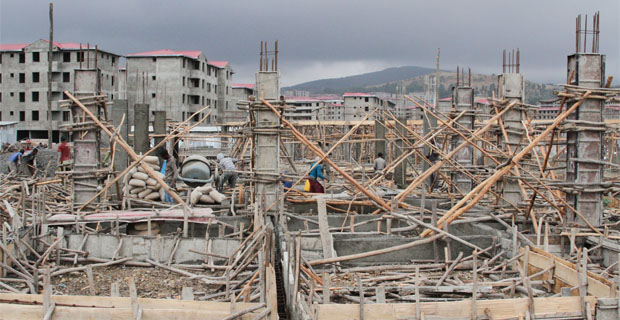





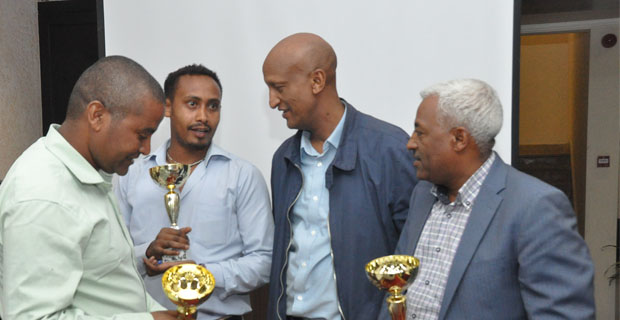

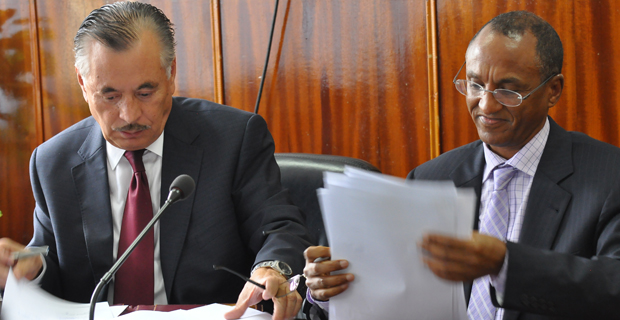
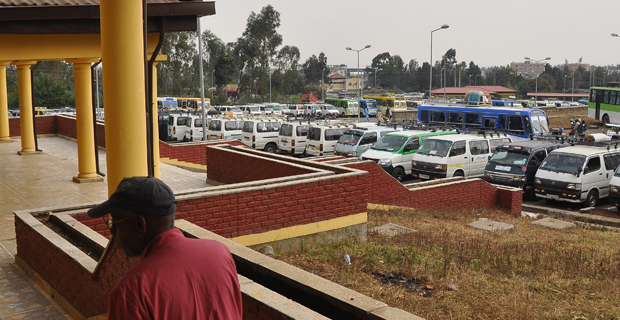
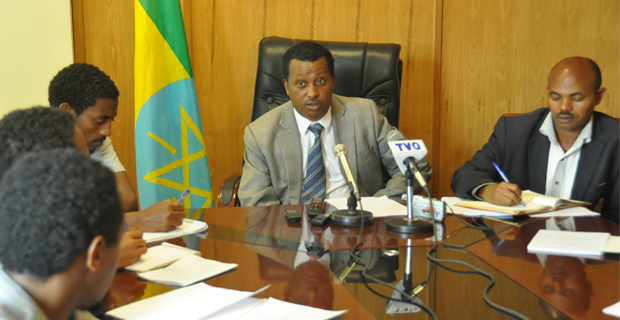
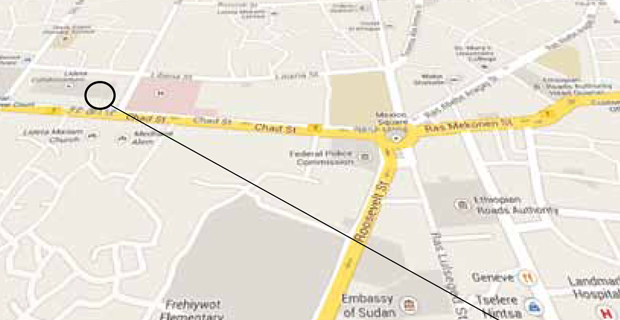
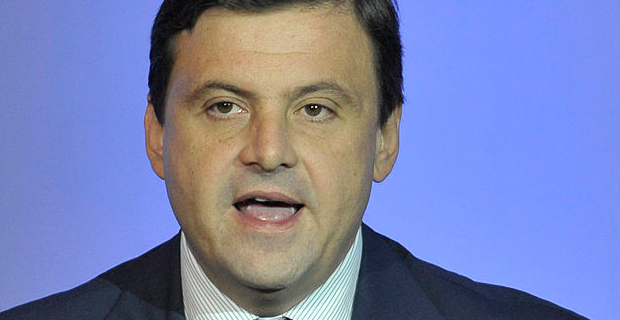

 .
.

























